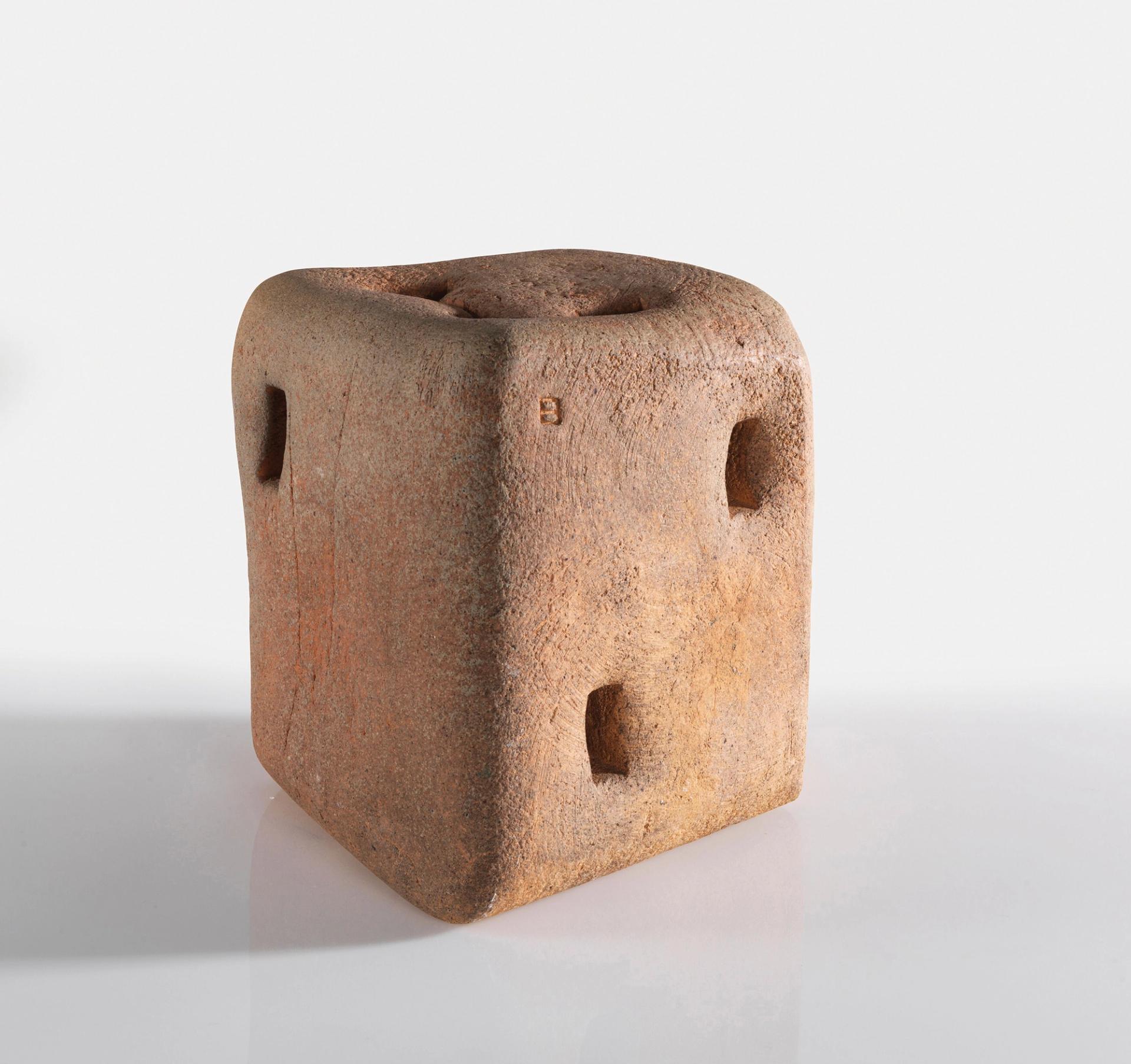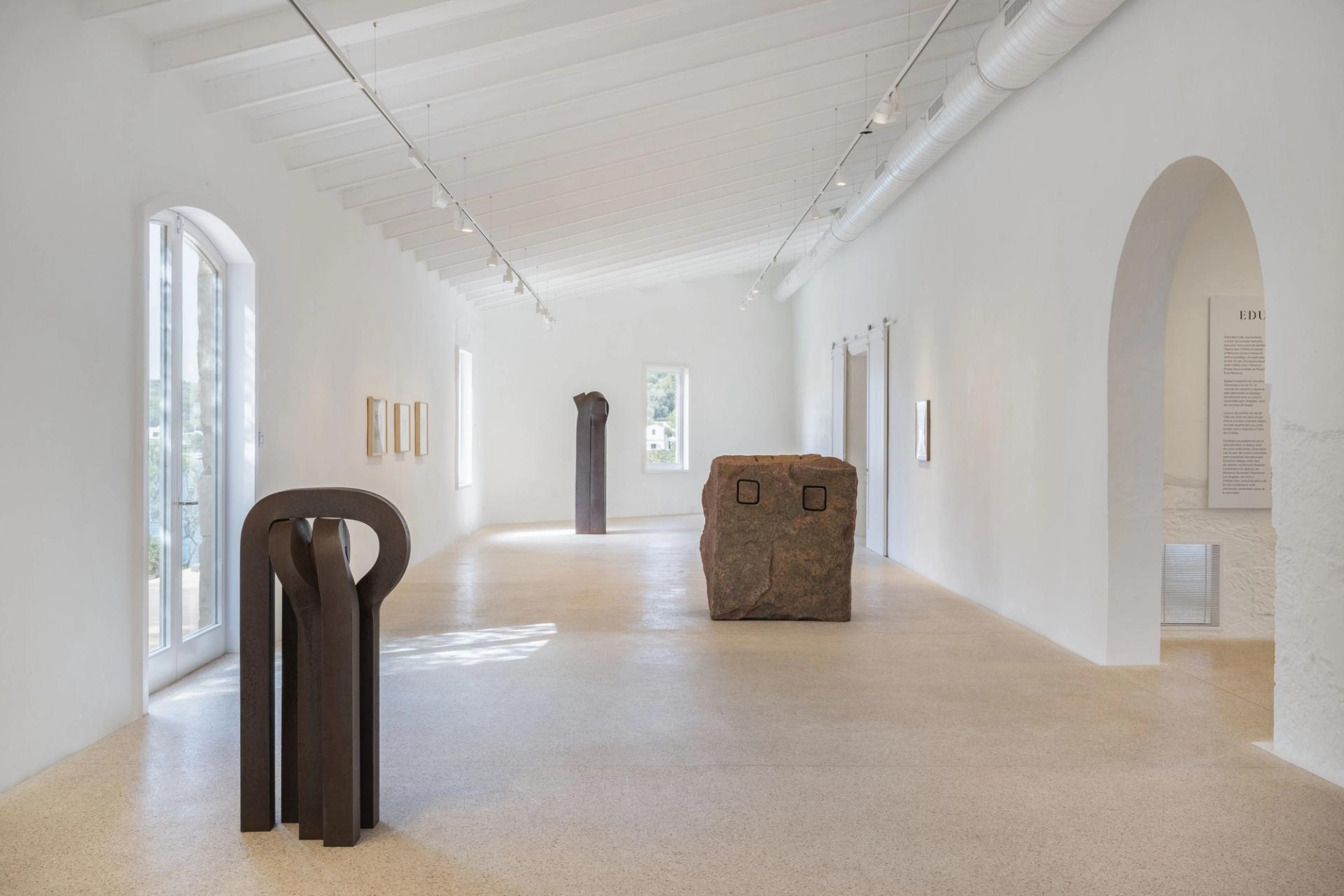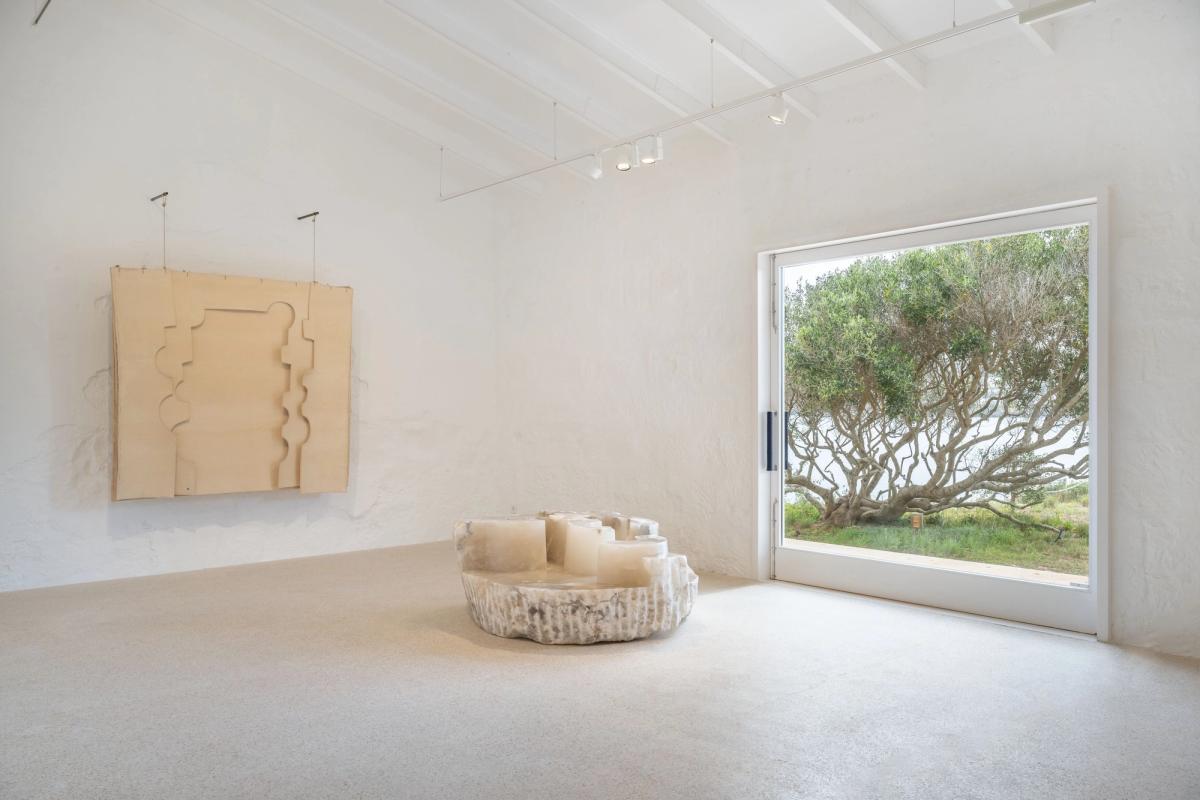Eduardo Chillida (1924-2002) would have been 100 this year. Born and raised in San Sebastián, he was a devoted Basque who, despite being critical of the separatist group Eta, became a figurehead for the region; in his use of materials, especially iron, which had been used in the area for centuries, he applied Modernist ideas using ancient techniques.
In his lifetime, Chillida arguably became Spain’s most internationally recognised sculptor, a paradoxical achievement during Franco’s dictatorship, which had limited sympathy for abstract art. As political headwinds blew this way and that, and as his works were interpreted as variously Basque, Spanish and internationalist, Chillida would say that “a person, any person, is more valuable than a flag, any flag”.
To commemorate his centenary, Hauser & Wirth Menorca is staging a major display of Chillida’s monumental public works, as well as sculptures, drawings, collages and prints. Alongside his relationship to the natural world, there will be an emphasis on Chillida’s humanist and even apolitical sensibilities.

Chillida’s Lurra M-13 (1995), a clay piece inspired by the island Photo: Marc Autenrieth. Courtesy Estate of Eduardo Chillida and Hauser & Wirth
While continuing to work every day, with his eight children in tow, from 1989 Chillida took his family to Menorca during the summers and it was there that his work took on a “lighter” quality, says his grandson, Mikel Chillida. “The move from the heavier, darker atmosphere of the Basque Country, where everything felt to be pushing down with such gravitational power, to the Mediterranean, with its unique light and joyous sense of uplift, reminded my grandfather of his earliest travels to Greece,” he says. The rugged landscape of Menorca, and especially the Talayotic prehistoric settlements, helped to inspire the Lurra (earth) series, chamotte clay pieces with deep grooves resembling keyholes that suggest hidden spaces within.

Chillida in Menorca at Hauser & Wirth Menorca © Zabalaga Leku. San Sebastián, VEGAP, 2024; Courtesy of the Estate of Eduardo Chillida and Hauser & Wirth; Photo: Damian Griffiths
Conceived on Menorca’s Illa del Rei by the architect Luis Laplace, who helped transform the Chillida Leku, a former barn-studio and now the artist’s foundation in San Sebastián, the exhibition seeks to reorientate our sense of Chillida away from the macho machinist into a sensitive lover of the natural world. But it is his persona as the “goalkeeper-sculptor” that, for many, continues to endure (his promising early footballing career as the goalkeeper for Real Sociedad was abruptly ended by a knee injury).
Mikel Chillida explains how football, as well as art, allowed his grandfather to find a way of communing with the world: “‘The goalkeeper is the only one who is looking at everything,’ my grandfather used to tell me … ‘there is nothing behind him, except the goal, which is the only three-dimensional object on the field, and he is the one controlling it … In art as in football, everything is time and space.’”
• Chillida in Menorca, Hauser & Wirth Menorca, Illa del Rei, 11 May-27 October


